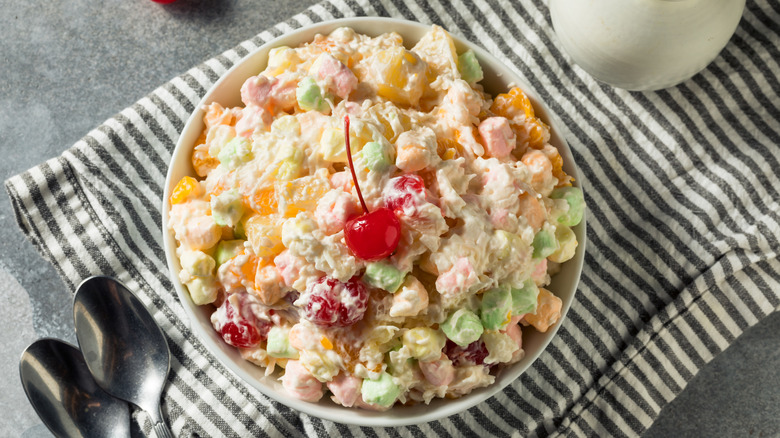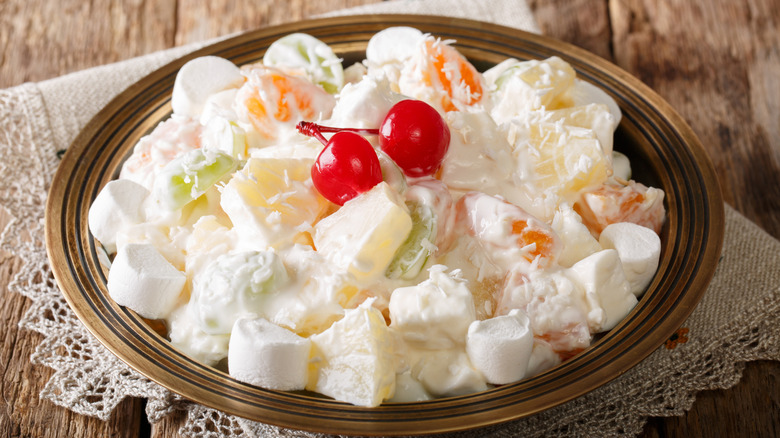Cringeworthy Today, Ambrosia Salad Was Once A Symbol Of Luxury
If you consider yourself a gourmand but haven't heard of ambrosia salad — well, that's actually quite okay. This dessert (it's a dessert more than a salad, although you could argue that it's something of a fruit salad) was immensely popular from the late 1800s and through much of the 1900s, although, like Mormon-inspired frog eye salad, it has dropped off the radar of many chefs and home cooks in recent decades. And despite its messy appearance, it was even considered quite the luxury, sharing its name with the food of the Greek gods in ancient myths.
That seems quite surprising when one considers the ingredients: Oranges, pineapple, shredded coconut, mini-marshmallows, and sour cream are the fundamentals, although some versions throw in extras like maraschino cherries (rather than Amarena cherries) and almonds; whipped cream is also not uncommon as a topping for it. It's a simple concoction, too: These ingredients are simply thrown together and left for a few hours for the flavors to mix.
So, why was such a simple (and arguably odd) mix of ingredients considered luxurious? This goes back to ambrosia's early days in the mid-to-late 1800s. At that time, tropical ingredients like coconut and pineapple were rare in the United States — because they were expensive to import from faraway places that grew them, they were seen as a luxury food, and an exotic novelty. While oranges were more accessible, they were only available at certain times of the year. So, the cost and difficulty of getting the components for ambrosia made it a delicacy of sorts.
How ambrosia salad rose and fell
There's no one person credited with creating ambrosia, but it's believed to have started surfacing in American kitchens around the 1860s. It's thought to originate from the South. The early version was simpler, often with just orange, coconut, and sugar (and pineapple sometimes took the place of orange); some purists insist that this is the right way to make the dish, and that extras like marshmallows and sour cream are unacceptable. As the turn of the century approached, different cooks threw in different ingredients like whipped cream and other fruit, turning the dish into more of a fruit salad; marshmallows probably crept in a few decades later in the 20th century.
As tropical or seasonal fruits became easier to buy, and specialty machines allowed coconuts to be processed, ambrosia trickled down to the middle class. Despite its Southern origins, the dish was relatively common around the country. It evolved into a holiday dessert in the South, often served with Christmas dinner, although the reasons for this are unclear. Over time, ambrosia lost its popularity, developing an image for being one of those quirky, retro foods. There isn't a singular reason for this — some suggest that it was just too much of an odd combination of ingredients, others say it was just plain unappealing (especially when more outlandish additions like Jell-O and cream cheese started to creep in). But it hasn't totally vanished from the American culinary canon, remaining somewhat of a Christmas classic in the South.

